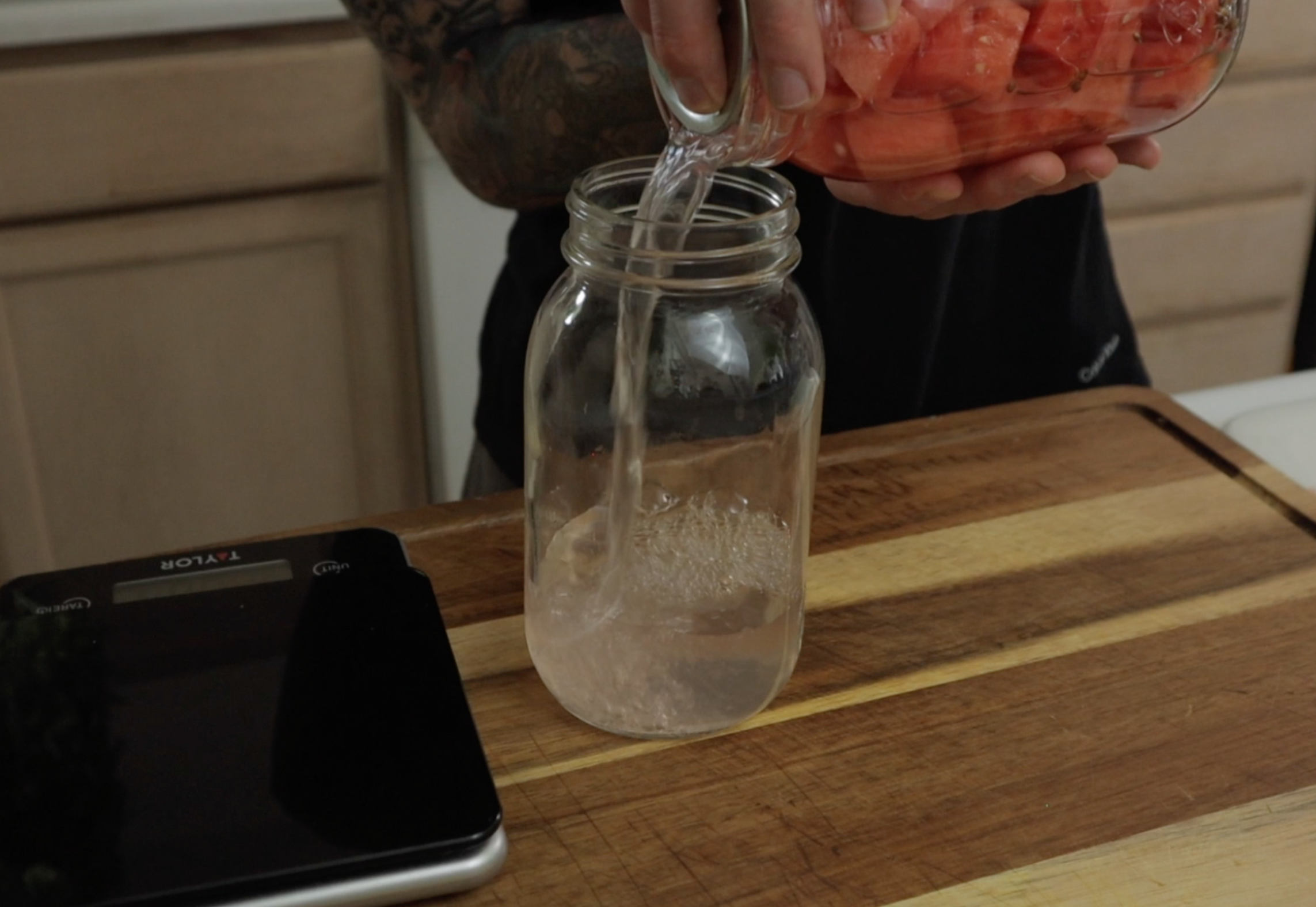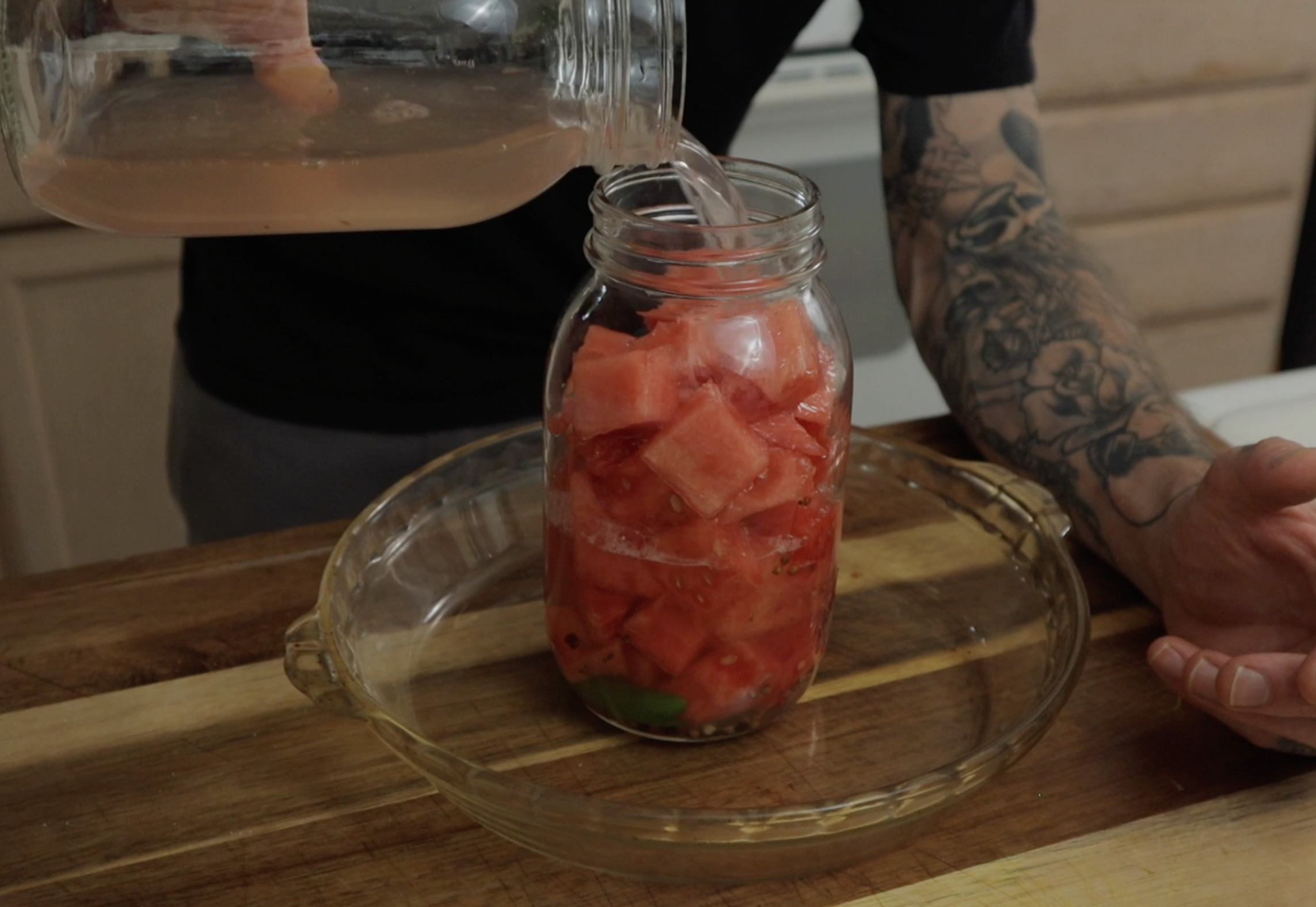Lacto Fermented Watermelon = DELICIOUS
Photo taken outside before placing in pantry to ferment for 5-7 days.
Lacto fermented watermelon is a really nice treat to have. I don't ferment watermelon to preserve it, more so to enjoy the flavor that the fermentation process brings out in the watermelon. This is all done by weight, so you will need a digital scale that reads in grams to make this recipe.
Ingredients:
1 watermelon
1 serrano pepper
7 whole coriander seeds
12 black peppercorns
Filtered water or bottled spring water
1 -2 drops fresh squeezed lemon juice
Fine sea salt
Tools needed:
Sharp knife
Digital scale
Cutting board
2 mason jars with lids
Glass weight
How to make it:
Everything must be clean and sanitized for a safe fermentation.
Cut watermelon off rind, then break it down into roughly 2 inch cubes. Try to keeps pieces similar in size. As the watermelon ferments, it will break down slightly and become softer. Try to get a watermelon that is heavy for its size and good ripeness. Watermelons are hit or miss sometimes, you need one that has good structure too when the pieces are cut up. A soft watermelon won’t be that great fermented as it will be too mushy.
Cut the stems off the serrano pepper, cut in half. I look at the seeds to make sure none are bad. They will be darker in color. Good seeds are a whitish color. I keep the seeds in, but you can remove them if desired.
Place empty Mason jar on scale, zero out. Add peppercorns, coriander, serrano and watermelon. Fill the jar with water just to the bottom of the neck. Add a drop or 2 lemon juice. The juice helps rid the water of chloramine that may be present in filtered water. Record that weight. This value is to be multiplied by .03 for a 3 % brine. For example, if the jar plus ingredients is 870 g, multiply that value by .03(3%). You’ll get 26.1, round that down to 26 g. This is the amount of fine sea salt you will need to make the brine.




Carefully pour the water into another empty mason jar, using a lid to hold back the ingredients. Zero out the scale and slowly add your fine sea salt until your scale reads 26 g. Cover jar tightly with a lid, shake vigorously to dissolve the salt in the water. Pour brine back into the jar that has the ingredients. Use a weight to keep ingredients under the brine level. I recommend using glass. I found that an empty baby food jar works great given the mouth size on my mason jars. No plastic or metal is to be used! This is very important to keep ingredients underneath that brine level. This creates an anaerobic environment (no oxygen). Any air that is allowed to touch the ingredients will allow mold to form. This is no good and you will need to discard your project and start over!
Let this sit on your countertop for 5-7 days. You’ll see evidence of the fermentation process start to work around day 3. Taste at day 5 to determine if you want it more fermented. If you have litmus paper or a digital pH meter, check that the brine has a pH level of 4-6. This will prove that the lactic acid has reached the level to keep bad bacteria from forming and lactobacillus is present. Lactobacillus feeds off of the sugars in the watermelon, creating lactic acid.
Fermenting watermelon is great for flavor on the watermelon, not for preserving purposes. I only ferment enough at a time to use for a specific recipe to make immediately.
I made a watermelon and feta salad with mint that this goes great in!
Enjoy!
Logan




